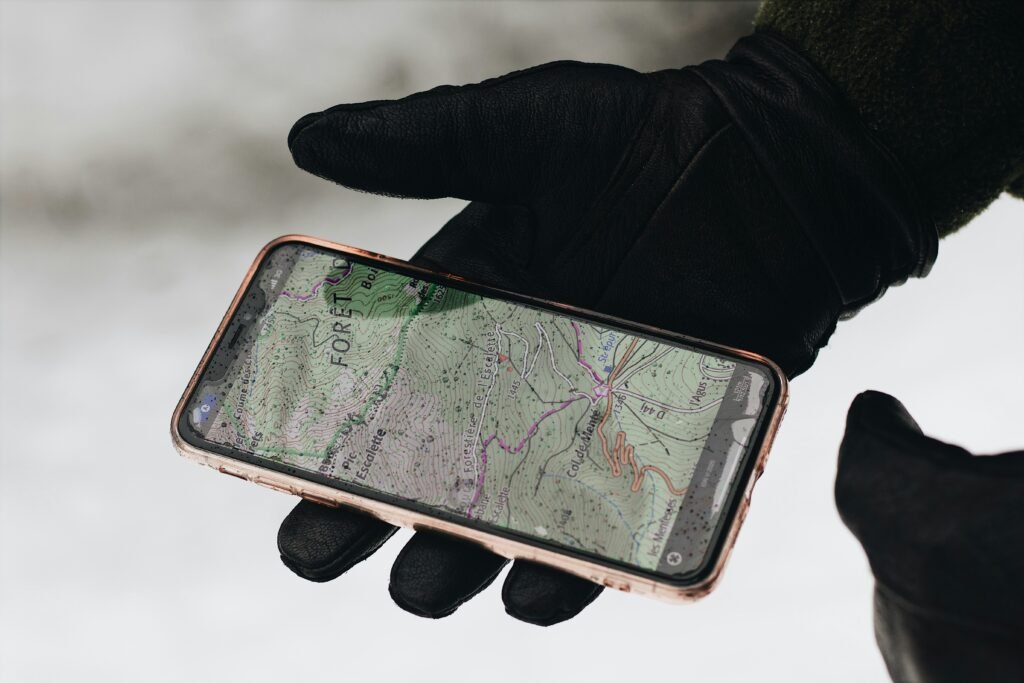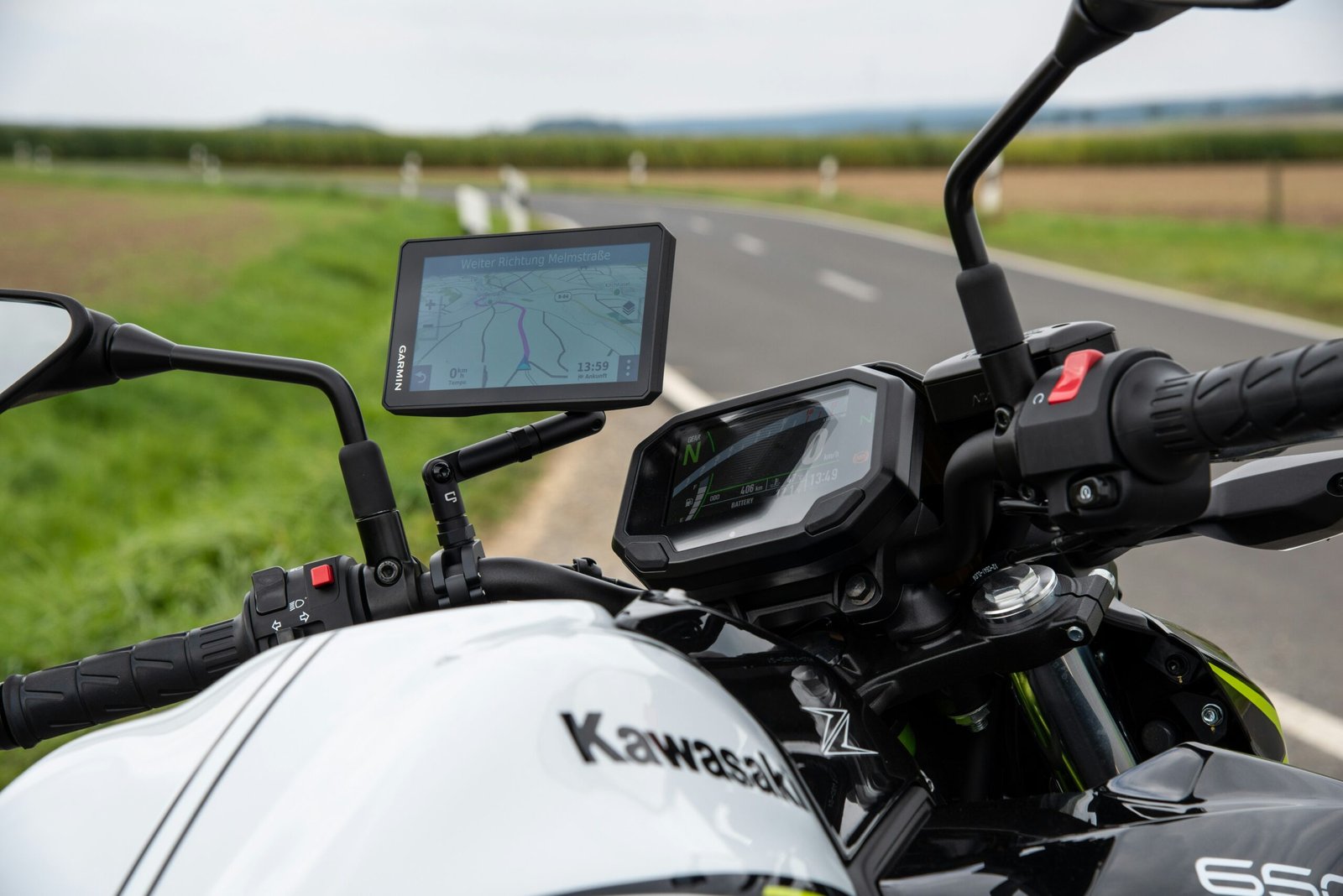In today’s world, where technology seamlessly integrates with transportation, motorcycle GPS devices have transformed the way riders explore the open road. These tools have become indispensable for motorcyclists, offering much more than just navigation—they enrich the riding experience with features designed specifically for modern riders. Whether it’s mapping out scenic routes or steering clear of traffic, a motorcycle GPS puts essential information right at the rider’s fingertips, making each journey safer and more enjoyable.
There are two types of GPS technology: 1. Navigation and 2. Tracking. The first time my motorcycle was stolen, I realized how important the GPS tracking system is. Now I’ll talk about what GPS technology is, how it works, what benefits it offers, and how to install it. Let’s start.
GPS Technology in Motorcycle Riding
Motorcycle GPS technology has evolved far beyond simple navigation, offering a diverse range of features tailored to the specific needs of riders. Today’s motorcycle GPS systems are designed with rugged, weatherproof construction, high-visibility screens that remain readable even in bright sunlight, and long-lasting battery life for extended rides. These devices also seamlessly integrate with other motorcycle tech, such as Bluetooth for helmet headsets, allowing for hands-free communication, music streaming, and audible navigation prompts.
The advancements in GPS technology have introduced sophisticated mapping and routing capabilities. Riders can now customize their journeys based on preferences, whether they’re looking for the quickest, shortest, or most scenic route. Modern systems can adjust routes in real-time, accounting for traffic updates and road closures to ensure a smooth journey. For those who crave adventure, these GPS devices also offer off-road mapping and trail tracking, unlocking new possibilities for exploration beyond the pavement.
Beyond practicality, GPS technology helps build a community among riders. Many devices and apps enable the sharing of favorite routes and ride logs, allowing motorcyclists to discover new experiences and connect with others who share their passion for the open road. As we explore the extensive capabilities of motorcycle GPS systems, it becomes evident that this technology is essential to the modern riding experience. It not only simplifies navigation but also enhances the adventure, ensuring that every ride is memorable.
Types of Motorcycle GPS Systems
There are several types, each with features tailored to different riding styles and needs:
- Dedicated Motorcycle GPS Units: Specifically designed for motorcycles, these units are rugged, weatherproof, and often come with motorcycle-specific features like glove-friendly touch screens, route planning for scenic rides, and compatibility with motorcycle mounts, such as Garmin Zumo series and TomTom Rider.
- Smartphone GPS Apps: GPS apps like Google Maps are used by many riders for long rides.
- Built-In GPS on Motorcycle Displays: Some modern motorcycles come with integrated GPS systems built into their displays. These systems are usually part of a broader infotainment package.
- Aftermarket GPS Units: Available for purchase, you can pick anything. But I personally use GPS with my mobile and use Google Maps. If you have an expensive motorcycle, you might prefer using a built-in GPS system.
Dedicated Motorcycle GPS vs. Smartphone GPS Apps

Features of High-End Motorcycle GPS Units
- Robust Build and Weatherproofing: Robust build and weatherproofing are crucial features, especially for riders who frequently face harsh conditions or long rides. Rough terrains produce significant vibrations that can damage electronic devices. A robust GPS unit is designed to withstand these vibrations, ensuring it remains functional over time.
- Water Resistance: Riding in the rain or through waterlogged areas is a reality for many motorcyclists. A weatherproof GPS unit is typically rated with an IPX rating, indicating its resistance to water. An IPX7 or IPX8 rating means the unit can withstand immersion in water for a limited time, ensuring it remains operational even in heavy rain.
- Sunlight and Temperature Resistance: Motorcycle GPS units are often exposed to direct sunlight and extreme temperatures. A weatherproof unit is designed to operate efficiently in both very hot and very cold conditions, with screens that remain readable in bright sunlight.
- Extended Battery Life: When you go for a long ride, you need long battery support. Nowadays, every motorcycle has a charging system, so you don’t need to worry about this.
Budget-Friendly GPS Options for Everyday Riders
For riders who are mindful of their budget, there are several affordable GPS options that offer a good mix of cost and functionality. While these devices might not have all the bells and whistles of premium models, they still provide dependable navigation to help you plan your routes effectively. Additionally, many riders choose to use smartphone GPS apps as a more economical alternative, combined with a sturdy mounting system for easy navigation while on the move.
Tips: I always prefer a good mobile holding mount on my motorcycle. It helps me for off-road riding and keeps my mobile safe. You should always look for this.
Now I’ll talk about GPS Tracking Systems
Losing a motorcycle is a terrible experience for any owner. I am a victim of this situation. Every year, countless bikes are stolen, and without proper security measures, recovering them can be difficult. This is where a motorcycle GPS tracker becomes invaluable. Installing a GPS tracker on your bike can greatly improve the chances of retrieving it if it’s stolen.
Benefits of Motorcycle GPS Trackers
The most significant benefit of GPS trackers is theft recovery. If your motorcycle is stolen, a GPS tracker allows you to track its location in real-time, increasing the chances of a quick recovery. Some trackers let you set up virtual boundaries. You’ll receive an alert if your bike moves outside the designated area, allowing you to respond swiftly to unauthorized movement.
Real-Time Tracking for Peace of Mind
Many GPS trackers provide real-time updates of your motorcycle. Whether you’re at home or away, you can check your motorcycle’s status and location through an app, providing peace of mind that your bike is secure.
Route Planning and Navigation Assistance
Enhanced Riding Safety Features: Crash Detection, etc. An alarm system can notify your neighborhood if your vehicle gets stolen, but only if it manages to evade the thief’s detection. Experienced criminals may know how to disable an alarm, so when that happens, a GPS tracker steps in as a silent safeguard. It sends alerts directly to your phone when it detects suspicious movement, such as your motorcycle leaving familiar locations like your home, workplace, café, or campsite. These alerts usually come via SMS, push notification, or email, enabling you to take swift action to recover your motorcycle before it’s too late or at least track where it’s been hidden.
How to Install a GPS System
There are two ways to install it:
- Self-Installation: When you install this, you will need some accessories like a GPS tracker unit, SIM card (if required by the GPS tracker), wiring harness (often provided with the GPS tracker), electrical tape or heat shrink tubing, zip ties, screwdriver, and other basic tools. Select a proper place to hold the device.
- Professional Installation: I always prefer that you install it by a professional for the best safety. Proper knowledge is required for electrical connections.

